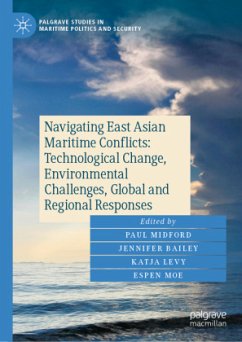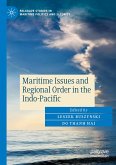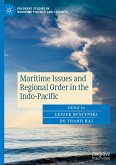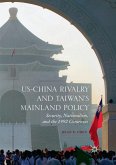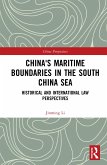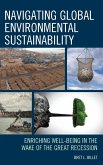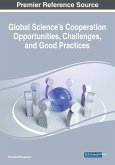Navigating East Asian Maritime Conflicts: Technological Change, Environmental Challenges, Global and Regional Responses
Herausgegeben:Midford, Paul; Bailey, Jennifer L.; Levy, Katja; Moe, Espen
Navigating East Asian Maritime Conflicts: Technological Change, Environmental Challenges, Global and Regional Responses
Herausgegeben:Midford, Paul; Bailey, Jennifer L.; Levy, Katja; Moe, Espen
- Gebundenes Buch
- Merkliste
- Auf die Merkliste
- Bewerten Bewerten
- Teilen
- Produkt teilen
- Produkterinnerung
- Produkterinnerung
As technological development and diffusion have greatly increased the resources states can recover from maritime space, the stakes of these conflicts have grown. Nowhere is this clearer than in East Asia. This book examines how technological change and diffusion impact East Asian maritime conflicts, and approaches for conflict management and resolution.
Andere Kunden interessierten sich auch für
![Maritime Issues and Regional Order in the Indo-Pacific Maritime Issues and Regional Order in the Indo-Pacific]() Maritime Issues and Regional Order in the Indo-Pacific33,99 €
Maritime Issues and Regional Order in the Indo-Pacific33,99 €![Maritime Issues and Regional Order in the Indo-Pacific Maritime Issues and Regional Order in the Indo-Pacific]() Maritime Issues and Regional Order in the Indo-Pacific33,99 €
Maritime Issues and Regional Order in the Indo-Pacific33,99 €![US-China Rivalry and Taiwan's Mainland Policy US-China Rivalry and Taiwan's Mainland Policy]() Dean P. ChenUS-China Rivalry and Taiwan's Mainland Policy22,99 €
Dean P. ChenUS-China Rivalry and Taiwan's Mainland Policy22,99 €![China's Maritime Boundaries in the South China Sea China's Maritime Boundaries in the South China Sea]() Jinming LiChina's Maritime Boundaries in the South China Sea204,99 €
Jinming LiChina's Maritime Boundaries in the South China Sea204,99 €![Navigating Global Environmental Sustainability Navigating Global Environmental Sustainability]() Bret L. BilletNavigating Global Environmental Sustainability124,99 €
Bret L. BilletNavigating Global Environmental Sustainability124,99 €![Global Science's Cooperation Opportunities, Challenges, and Good Practices Global Science's Cooperation Opportunities, Challenges, and Good Practices]() Global Science's Cooperation Opportunities, Challenges, and Good Practices197,99 €
Global Science's Cooperation Opportunities, Challenges, and Good Practices197,99 €![Great Powers, Climate Change, and Global Environmental Responsibilities Great Powers, Climate Change, and Global Environmental Responsibilities]() Great Powers, Climate Change, and Global Environmental Responsibilities130,99 €
Great Powers, Climate Change, and Global Environmental Responsibilities130,99 €-
-
-
As technological development and diffusion have greatly increased the resources states can recover from maritime space, the stakes of these conflicts have grown. Nowhere is this clearer than in East Asia. This book examines how technological change and diffusion impact East Asian maritime conflicts, and approaches for conflict management and resolution.
Produktdetails
- Produktdetails
- Palgrave Studies in Maritime Politics and Security
- Verlag: Palgrave Macmillan / Springer Nature Switzerland / Springer, Berlin
- Artikelnr. des Verlages: 978-3-031-51988-8
- 2024
- Seitenzahl: 456
- Erscheinungstermin: 25. August 2024
- Englisch
- Abmessung: 216mm x 153mm x 29mm
- Gewicht: 670g
- ISBN-13: 9783031519888
- ISBN-10: 3031519884
- Artikelnr.: 69586846
- Herstellerkennzeichnung Die Herstellerinformationen sind derzeit nicht verfügbar.
- Palgrave Studies in Maritime Politics and Security
- Verlag: Palgrave Macmillan / Springer Nature Switzerland / Springer, Berlin
- Artikelnr. des Verlages: 978-3-031-51988-8
- 2024
- Seitenzahl: 456
- Erscheinungstermin: 25. August 2024
- Englisch
- Abmessung: 216mm x 153mm x 29mm
- Gewicht: 670g
- ISBN-13: 9783031519888
- ISBN-10: 3031519884
- Artikelnr.: 69586846
- Herstellerkennzeichnung Die Herstellerinformationen sind derzeit nicht verfügbar.
Paul Midford is Professor of Political Science, Meiji Gakuin University, Japan. Jennifer L. Bailey is Professor of Political Science, Norwegian University of Science and Technology (NTNU), Norway. Katja Levy is Associate Professor of Political Science, Norwegian University of Science and Technology (NTNU), Norway. Espen Moe is Professor of Political Science, Norwegian University of Science and Technology (NTNU), Norway.
Part I: Framework.- Chapter 1: Introduction.- Chapter 2: The Law of the Sea and its Relevance for Maritime Conflicts in East Asia.- Part II: Security Dimensions.- Chapter 3: Unmanned maritime platforms and the undersea struggle in the South China.- Chapter 4: Low Intensity Maritime Conflicts, Escalation Management and Technology.- Chapter 5: Military Automation, Robotics, and Maritime Security, Understanding New Dynamics in Conflict Escalation.- Part III: East Asian Maritime Competition and the Arctic.- Chapter 6: The Impact of Russia's Ukraine Invasion on the Arctic-From Cooperation to Conflict?.- Chapter 7: China's Arctic Strategy, From Follow-up to "Creative Involvement".- Chapter 8: Japan's Arctic Strategy, Countering East Asian Maritime Insecurity and Competition with China.- Part IV: Seabed Mining.- Chapter 9: Rare and Infinite The Minami-torishima "Semi-infinite" Rare Earth Elements and the historical dynamics of Deep-Sea Mining.- Chapter 10: Japan's Seabed Mining as a Cause and Result of East Asian Maritime Tensions.- Chapter 11: Limited semi-infinity Japan's deepsea resources against the backdrop of China's rare earth.- Part V: Fishing and Renewable Energy.- Chapter 12: China's Digitalised Fishery Reform and Its Implications on the East Asian Maritime Order.- Chapter 13: Japan's New Whaling Policy, Marine Management in an Evolving Security and Technological Setting.- Chapter 14: Offshore Wind in Japan, Energy Production and Conflict Reduction?.- Part VI: Conclusions.- Chapter 15: Conclusions.
Part I: Framework.- Chapter 1: Introduction.- Chapter 2: The Law of the Sea and its Relevance for Maritime Conflicts in East Asia.- Part II: Security Dimensions.- Chapter 3: Unmanned maritime platforms and the undersea struggle in the South China.- Chapter 4: Low Intensity Maritime Conflicts, Escalation Management and Technology.- Chapter 5: Military Automation, Robotics, and Maritime Security, Understanding New Dynamics in Conflict Escalation.- Part III: East Asian Maritime Competition and the Arctic.- Chapter 6: The Impact of Russia's Ukraine Invasion on the Arctic-From Cooperation to Conflict?.- Chapter 7: China's Arctic Strategy, From Follow-up to "Creative Involvement".- Chapter 8: Japan's Arctic Strategy, Countering East Asian Maritime Insecurity and Competition with China.- Part IV: Seabed Mining.- Chapter 9: Rare and Infinite The Minami-torishima "Semi-infinite" Rare Earth Elements and the historical dynamics of Deep-Sea Mining.- Chapter 10: Japan's Seabed Mining as a Cause and Result of East Asian Maritime Tensions.- Chapter 11: Limited semi-infinity Japan's deepsea resources against the backdrop of China's rare earth.- Part V: Fishing and Renewable Energy.- Chapter 12: China's Digitalised Fishery Reform and Its Implications on the East Asian Maritime Order.- Chapter 13: Japan's New Whaling Policy, Marine Management in an Evolving Security and Technological Setting.- Chapter 14: Offshore Wind in Japan, Energy Production and Conflict Reduction?.- Part VI: Conclusions.- Chapter 15: Conclusions.

